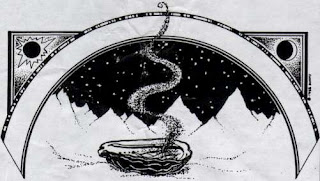For centuries the burning of herbs, tree resins, and aromatic woods has been practiced by many cultures around the world. Finding it's place in the home, the infirmary, the temple and the church.
Using smoke to deodorize, purify, or alter energy is done through the practice of smudging.
Better known herbs for use in smudging include Sage, Cedar, and Sweet Grass. Other dried herbs and plant materials used throughout history are Rose petals, Lavender, Rosemary, Patchouli leaf, Mugwort, Yerba Santa, and tree resins such as Pinon, Frankincense, Myrrh, and Copal--- which was considered "Food of the Gods" by the
ancient Aztecs. Many types of wood are also used as smudge material --- Sandalwood, for instance, as well as Cinnamon & Juniper.
SWEET GRASS
BRAIDS
MYRRH TEARS
 I know for many people, the thought of smudging may bring to mind images of priests chanting throughout an echoing cathedral while swinging smoking pots hung from chains, or that of the lamenting shaman or medicine man feathering smoke over the body of one who is ill. We quite naturally, almost by instinct, associate burning herbs with the exotic or the mystical.
I know for many people, the thought of smudging may bring to mind images of priests chanting throughout an echoing cathedral while swinging smoking pots hung from chains, or that of the lamenting shaman or medicine man feathering smoke over the body of one who is ill. We quite naturally, almost by instinct, associate burning herbs with the exotic or the mystical. Early doctors and healers recommended patients inhale smoke for medicinal purposes, such as relieving asthma symptoms and headaches.
People burned herbs to scent their homes, to keep away disease and pestilence, to smoke & preserve meat and fish, and to perfume themselves. The word 'perfume' means "through smoke", indicating that this was quite probably the initial means in which men & women used fragrances, by immersing themselves in the smoke of burning herbs.
Of the many herbs burned over the ages as a medicinal smudge, Rosemary was quite popular in Europe during the Middle Ages as its branches were burned in 14th century homes to ward off the Black Plague. This may seem a frivolous action considering the seriousness of the deadly disease, but these bereft people weren't that far from the answer. Modern research has proven that the volatile oil present in Rosemary has anti-bacterial properties.
Other herbs such as Lavender, Angelica leaves & roots, and Rose petals were burned solely for their delicate aroma.

Smudging is the traditional Native American way of using smoke to purify and cleanse the energy of specific space, objects, and people.
Sage, Cedar, and Sweet Grass are used as a part of many American Indian ceremonies because of their association with purity and in dispelling negative energy.
White Sage, the Grandfather of the 'artemesia' family of herbs, is especially revered for it's cleansing powers.
While Sweet Grass has long been used for its ability to protect by driving away negative thoughts and ill spirits. It is used in the sweat lodge and in healing ceremonies.
Cedar is also widely used almost universally among North American tribal peoples and is believed to be especially effective at attracting positive and beneficial energies.
Yerba Santa, the renown plant of early Californian people, is favored for it's cleansing effect, and no doubt, it's sweet, minty vanilla-like fragrance.
Smudge sticks or wands can usually be purchased at natural food stores or some alternative book or gift shops.
Some herbs come in a loose form, like the evergreen needles of the Cedar, rather than the bark are used for smudging. Other smudge materials such as aromatic tree resins are sprinkled on hot charcoal.
Increasingly, doctors, therapists, and body workers are discovering the beneficial aspects of these and many other "burnt offerings".
Smudging is one of the means by which people around the globe are reconnecting with the power of Mother Earth.


















No comments:
Post a Comment